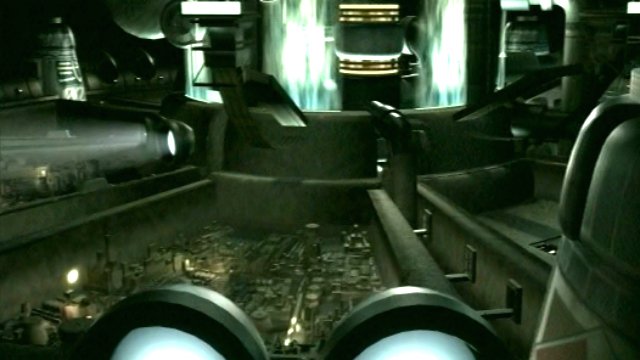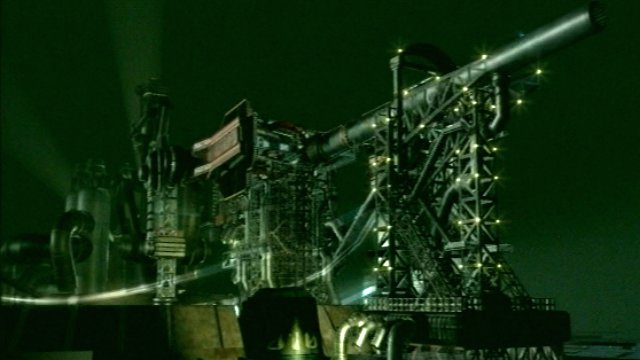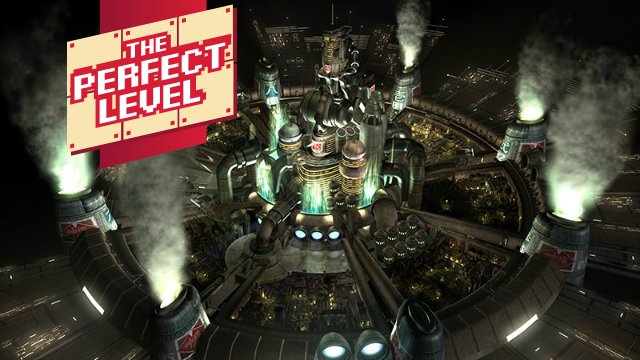Okay, so this might be a little bit cheating since Midgar isn’t technically a level, but I felt the need to showcase just how awesome of a location it is. The Final Fantasy games have a lot of fantastic and memorable places, but to me, Midgar is the series’ crowning achievement. The presentation of Midgar in Final Fantasy 7 is what finally sucked me into JRPGs and still stands as one of the best examples of world-building in the genre.
Final Fantasy 7 was perhaps the title that joined the worlds of cinematography and game design. Until its release in 1997, JRPGs were largely relegated to being overhead (or rarely side-scrolling or isometric) affairs that lacked depth. Sure, I love Final Fantasy 6 and Chrono Trigger, but when it came to displaying depth and scale those titles faltered.
With Final Fantasy 7 we got the first FMVs in the series, and for the first time in the series, the camera wasn’t relegated to a fixed overhead view for the field and a side view for battle. The camera in FF7 took many positions relative to the player during regular gameplay. In the pre-rendered backgrounds the camera was able to get up close and show detailed environments and interactions between characters or pull back to reveal immense buildings and landscapes.

Though the whole game is filled with enthralling locales, Square started it off with a bang in Midgar. Midgar was unlike anything I had ever seen before in an RPG. The steampunk vibes of FF6 and Chrono Trigger gave a hint that Square was becoming more experimental with the settings of their games, but nothing could prepare me for the first FMV in FF7.
Unlike previous JRPGs I’d played, where even the most massive city only felt like 30 people lived there, FF7’s Midgar struck me as being huge. The eight sector’s surrounding the imposing Shinra Tower looked so unlike the quaint hamlets of the RPGs that preceded it. It’s a technologically advanced city that gives off an extreme sense of foreboding and intimidation, and as the backdrop of the initial events of FF7, it worked beautifully.
For all the shiny metal and glamorous tech we see in the intro, we don’t spend much time on the upper levels of Midgar. Below the city, blocked off from the sky by massive metal plates that the wealthier citizenry live on, and from the outside by metal walls, are the slums. Part of what makes Midgar so vital is the class struggle you witness during the course of the game. Shinra, the company that controls the world of FF7, has literally just built a city over another city. While the wealthy citizens above the plates live in luxury, those below are stuck doing menial labor and can go their whole lives without seeing the sky.

Midgar is Shinra’s capital, and the center of the planet’s economy, culture, and politics. Throughout the game, no matter how far Cloud and party go, Midgar’s presence looms over them in the form of Shinra’s forces. Eventually, towards the end of the game, you once again return to Midgar and witness the devastation wrought by the WEAPONS. In Advent Children, set two years after Final Fantasy 7, we find out that the city has started crumbling into ruins and the survivors of Meteor and the planet’s wrath have used its scraps to build a new town called Edge. However, even then the ruins of Midgar hang heavy in the background.
One of my deepest hopes for the Final Fantasy 7 remake is that we get to see more of Midgar and how the people there live. We barely got to spend any time above the plates in the original game, and it would be nice to see the city get fleshed out some more. As much as I love the whole game, the thing I want to look at most in the remake is a recreated Midgar so that I can further appreciate its iconic design.







